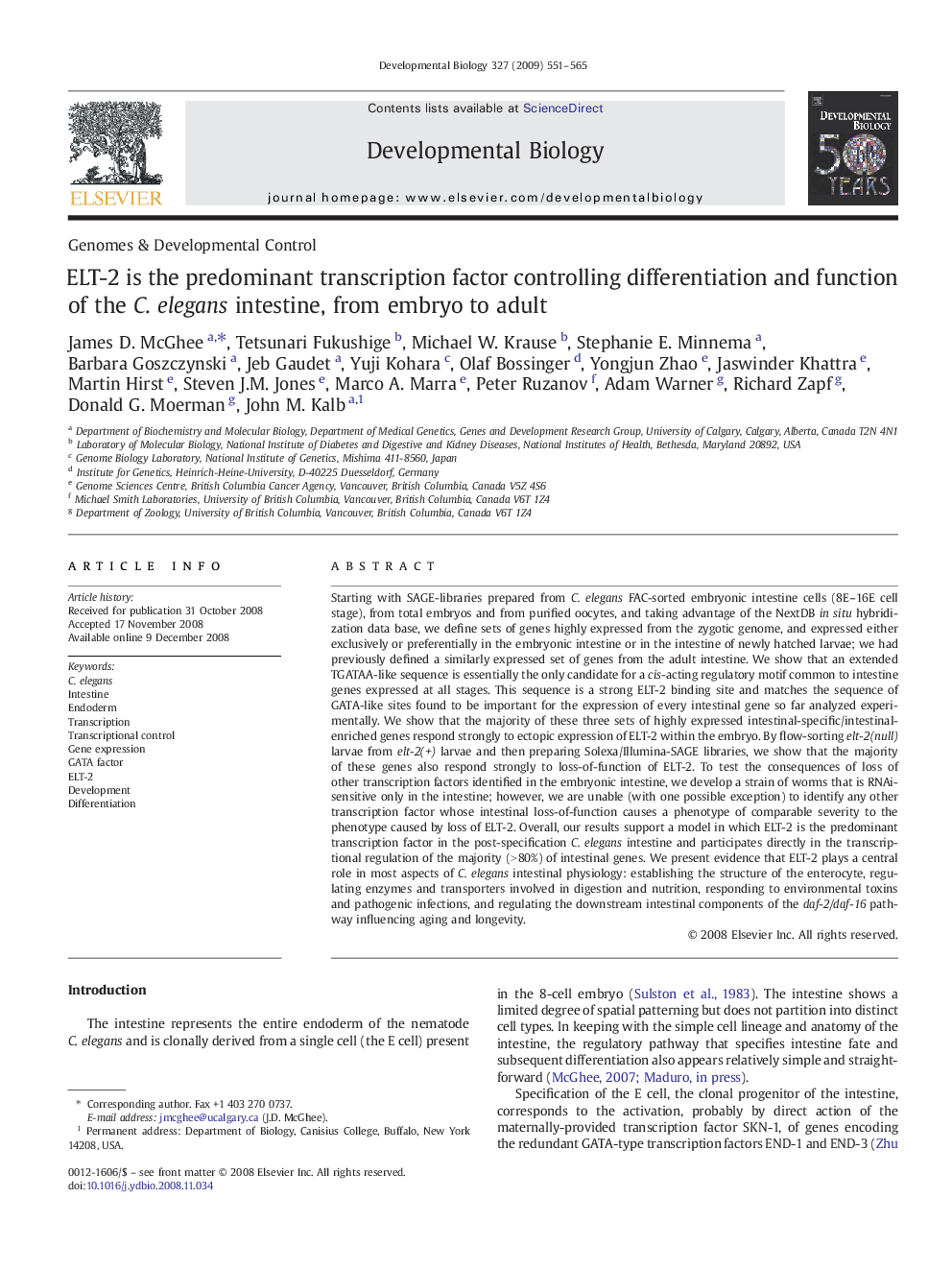| کد مقاله | کد نشریه | سال انتشار | مقاله انگلیسی | نسخه تمام متن |
|---|---|---|---|---|
| 2174408 | 1093795 | 2009 | 15 صفحه PDF | دانلود رایگان |

Starting with SAGE-libraries prepared from C. elegans FAC-sorted embryonic intestine cells (8E–16E cell stage), from total embryos and from purified oocytes, and taking advantage of the NextDB in situ hybridization data base, we define sets of genes highly expressed from the zygotic genome, and expressed either exclusively or preferentially in the embryonic intestine or in the intestine of newly hatched larvae; we had previously defined a similarly expressed set of genes from the adult intestine. We show that an extended TGATAA-like sequence is essentially the only candidate for a cis-acting regulatory motif common to intestine genes expressed at all stages. This sequence is a strong ELT-2 binding site and matches the sequence of GATA-like sites found to be important for the expression of every intestinal gene so far analyzed experimentally. We show that the majority of these three sets of highly expressed intestinal-specific/intestinal-enriched genes respond strongly to ectopic expression of ELT-2 within the embryo. By flow-sorting elt-2(null) larvae from elt-2(+) larvae and then preparing Solexa/Illumina-SAGE libraries, we show that the majority of these genes also respond strongly to loss-of-function of ELT-2. To test the consequences of loss of other transcription factors identified in the embryonic intestine, we develop a strain of worms that is RNAi-sensitive only in the intestine; however, we are unable (with one possible exception) to identify any other transcription factor whose intestinal loss-of-function causes a phenotype of comparable severity to the phenotype caused by loss of ELT-2. Overall, our results support a model in which ELT-2 is the predominant transcription factor in the post-specification C. elegans intestine and participates directly in the transcriptional regulation of the majority (> 80%) of intestinal genes. We present evidence that ELT-2 plays a central role in most aspects of C. elegans intestinal physiology: establishing the structure of the enterocyte, regulating enzymes and transporters involved in digestion and nutrition, responding to environmental toxins and pathogenic infections, and regulating the downstream intestinal components of the daf-2/daf-16 pathway influencing aging and longevity.
Journal: Developmental Biology - Volume 327, Issue 2, 15 March 2009, Pages 551–565